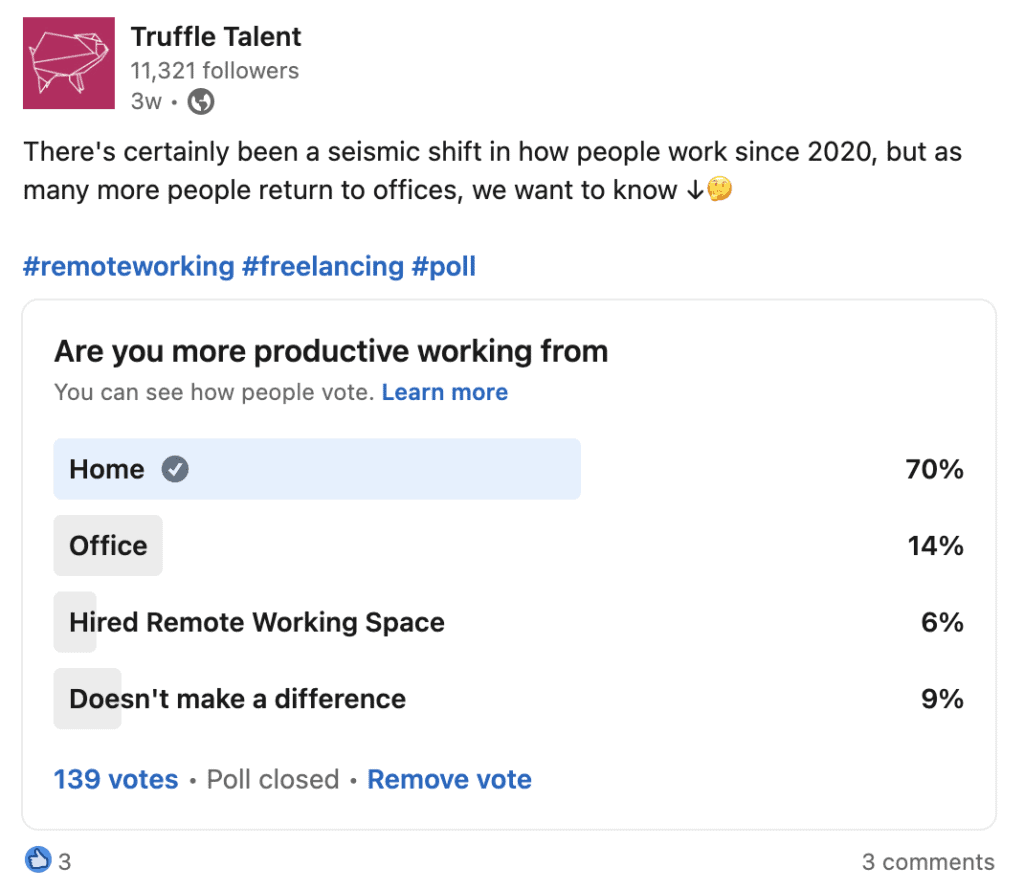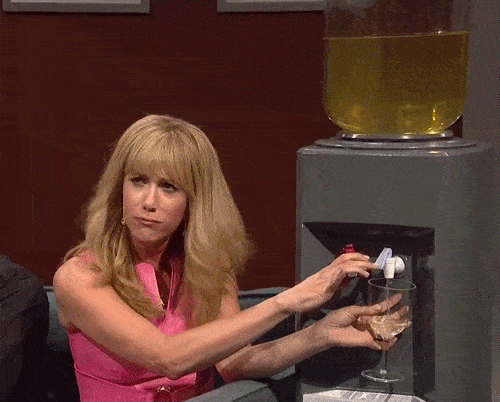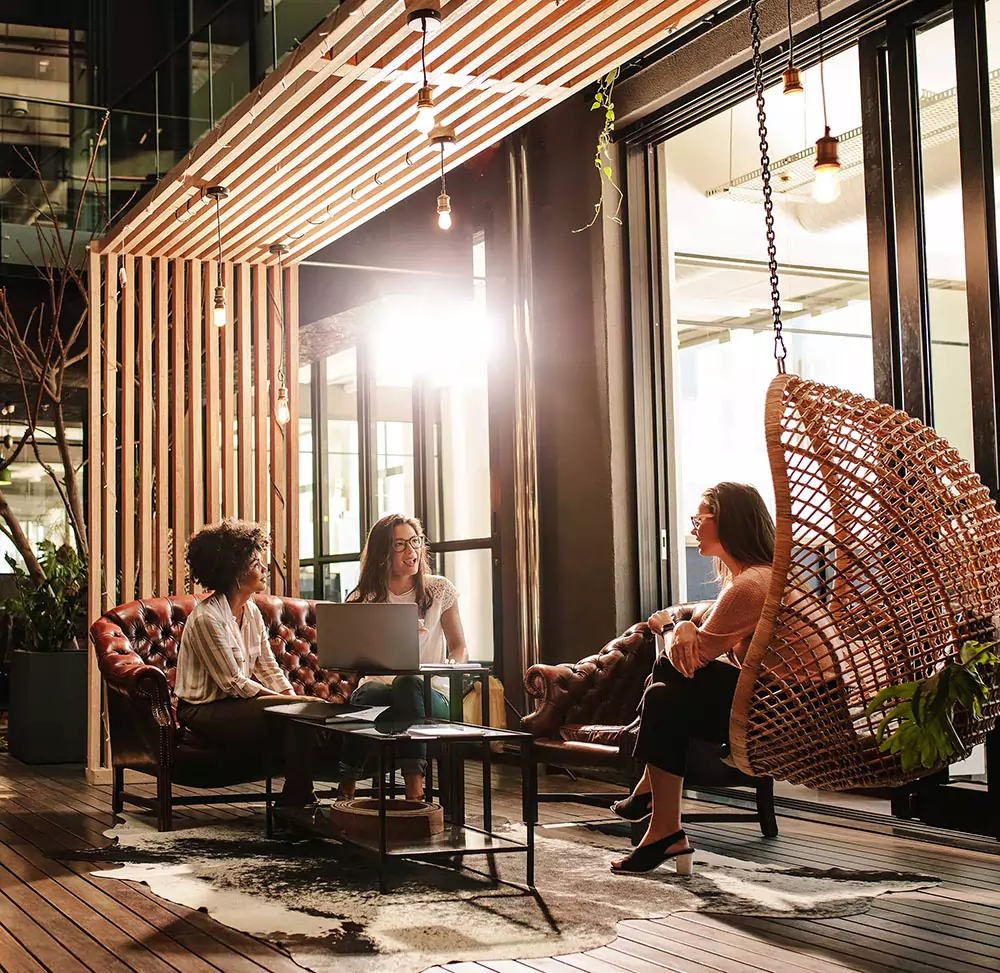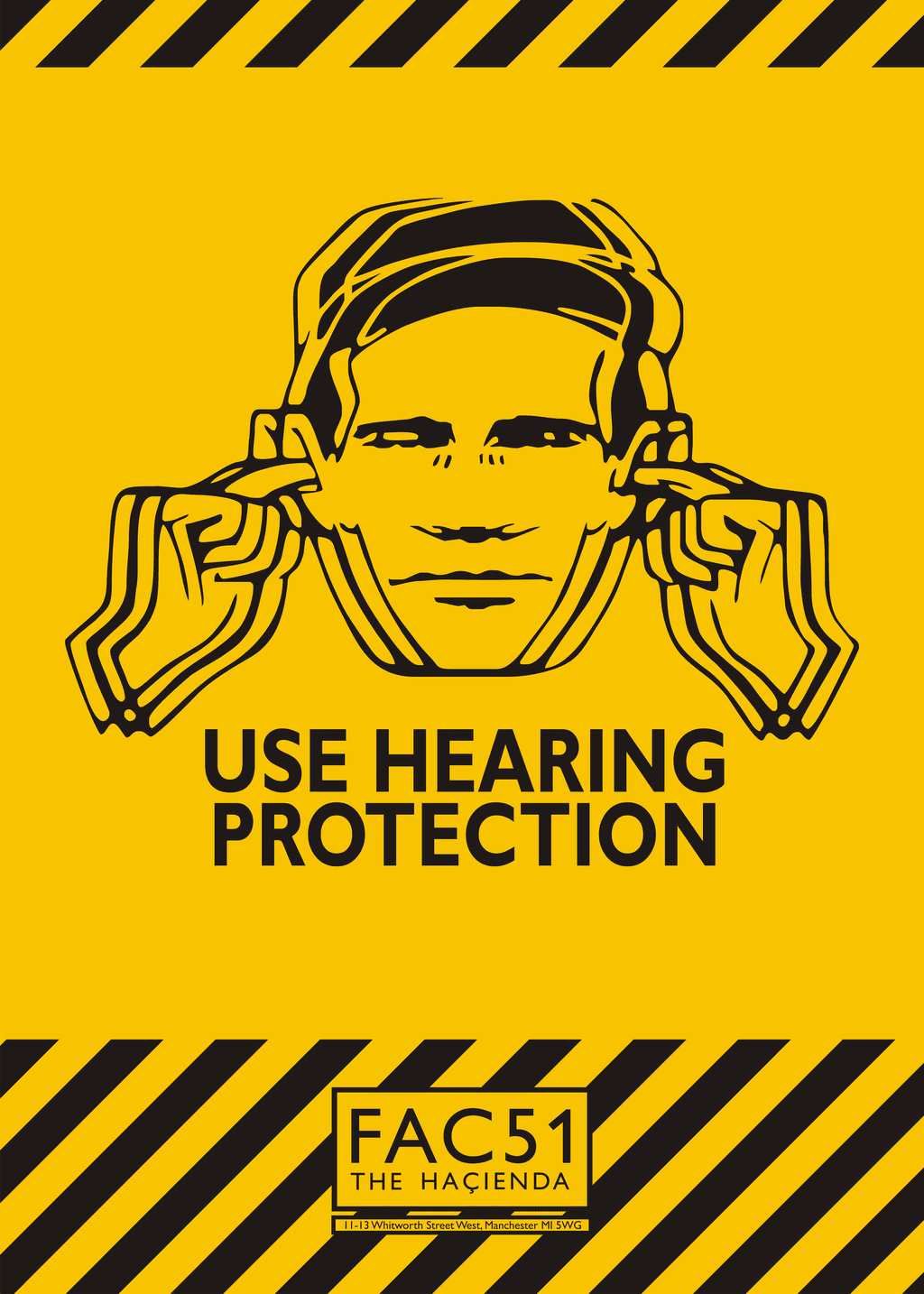It might not come as a surprise to many that we’re seeing more and more hybrid jobs being registered with us at Truffle Talent. In fact, almost all our live jobs right now require a degree of flexible hybrid working, whereas before creatives were traditionally expected to work in studios and be present 5 days a week in-house.
The change we’re seeing is the same for permanent and freelance workers.
Indeed the effects of the pandemic have, in part, led to around 87% of UK businesses adopting hybrid working habits, and employees now value “work from anywhere” flexibility as much as a 10% pay raise, according to new research.
Does Productivity Go Up or Down?
Whilst the issue of hybrid working has been questioned by some, citing productivity concerns and tactical issues around observing and coaching employees, all the signs so far suggest that hybrid working elevates productivity and doesn’t hinder it.
Research by PwC that draws upon the views of almost 4,000 business and HR leaders from 26 countries and regions and 28 industry sectors shows that most companies have boosted workforce productivity and performance during and after the pandemic. The survey found that:
“Remote and hybrid working has provided a short-term productivity boost in most workplaces, with 57% of respondents saying their organisation performed better against workforce performance and productivity targets over the past 12 months, compared to a mere 4% saying their company performed significantly worse in that time.”
Our research might be a little cruder… In a recent poll we conducted on our own Linkedin Page we asked people whether they were more productive at home, the office or in another space. The results? Drum roll…working from home.

There are a lot of compelling reasons for a shift to hybrid working. In a recent research study by Envoy, the biggest return-to-work deal-breakers are long or expensive commutes (35%), a disregard for Covid safety precautions (31%), no flexibility in work hours or days spent in the office (28%), and dealing with challenging or chatty coworkers (21%).
It would seem people are not so fussed about those water-cooler moments after all.

Staying Creative
Of course, for the design industry, there’s the whole question of how you stay creative as a team.
In a recent article by Creative Review co-founder of DixonBaxi, Simon Dixon revealed how his agency had embraced a hybrid working model and also implemented a 4-day working week while still putting creativity front and centre of what they do. He said: “We were honest with our team that while we were never going back to a five-day week, we believe being together is important. Creativity is tribal.”
DixonBaxi works flexibly on Mondays and Tuesdays and has face-to-face studio time on Wednesdays and Thursdays. They keep Friday mornings flexible and the studio closes at lunchtime so people can recharge. It’s working for them.
Keep Talent Happy
Ultimately every organisation, agency, creative outfit, and this includes freelancers, are different. It’s important we remain agile and open-minded about flexible working and embrace the benefits of it. Employee wellbeing is more important than ever, and employees expect employers to support their work-life balance.
We believe businesses need to recognise these changes and put in place the support that will encourage wellbeing among staff so that they can retain the best talent be that at home, the office or anywhere else for that matter.




